Frigate RFP Pioneers New Shipbuilding Approach
Posted on
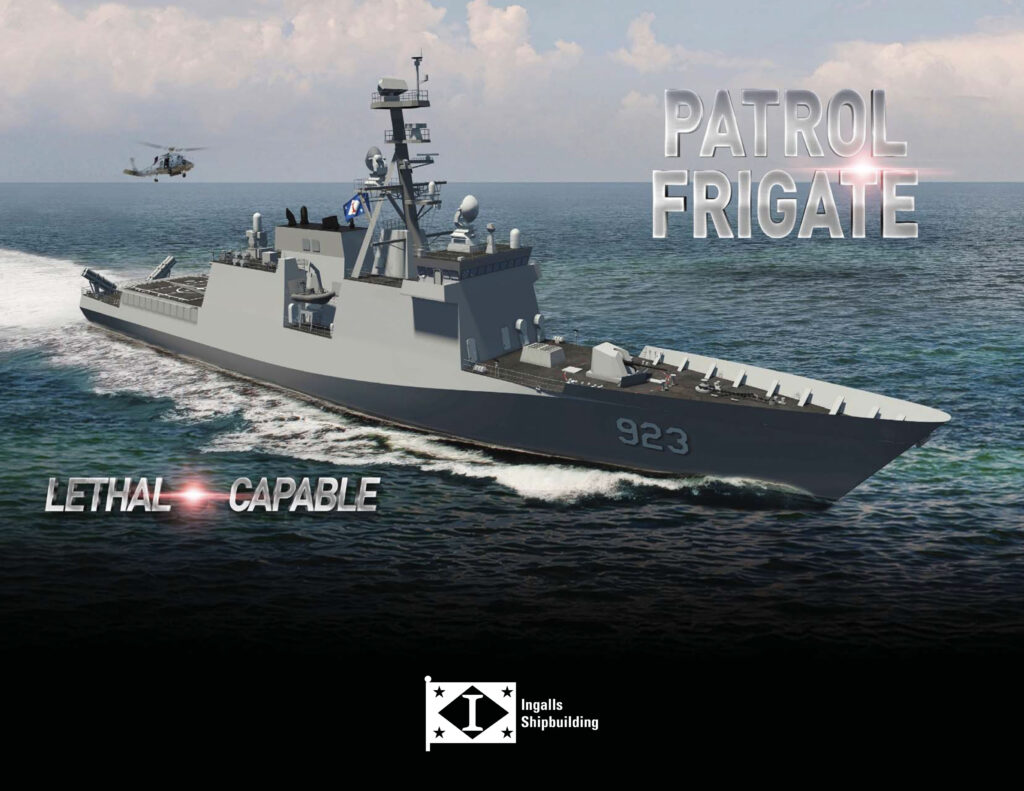
Huntington Ingalls concept for their Patrol Frigate, a militarized version of their Coast Guard National Security Cutter.
CRYSTAL CITY: When the Navy publishes its Request For Proposals to design a new frigate, probably today, there should be no surprises for industry. That’s by, well, design. In stark contrast to the predecessor program, the Littoral Combat Ship, where the Navy changed key specs midway through construction at great expense, the frigate is a test case for a new approach to building ships that seeks to squeeze out uncertainty early.
[UPDATE: The RFP came out a little later, on Tuesday.]
To borrow buzzwords from the admirals at this week’s Naval Submarine League conference, the new approach combines “set-based design” with “industry-informed requirements.” In layman’s terms, that means explore a wide range of options at the start, talk to industry early and often, then lock down requirements and move fast to get ships in the water.
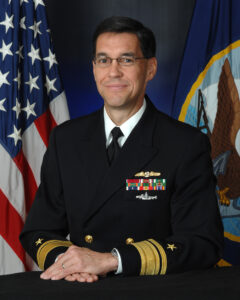
Adm. David Johnson
The frigate program, for example, is issuing its RFP for “conceptual designs” — the last phase before “detailed design and construction” — less than three years after it kicked off in 2015, with the first ship to be procured in 2020. (The original timeline was even tighter: 2019). The downside of that pace is that the frigate didn’t get to explore the widest range of options.
But there are plenty of other programs applying parts or all of the new approach, such as the MQ-25 Stingray drone, Long-Range Anti-Ship Missile (LRASM), and Maritime Strike Tomahawk, said Vice Adm. David Johnson, the Navy’s top uniformed acquisition official. The critical tests, the cases where the Navy can fully apply the new method, will be two much bigger programs much further in the future, which aim to replace the Navy’s workhorses on and below the surface. One is the successor to the Arleigh Burke-class destroyer, the Future Surface Combatant (FSC). The other is the successor to the Virginia-class attack submarine, SSN(X).
“We are challenged with frigate,” said Rear Adm. Lorin Selby, chief engineer at Naval Sea Systems Command (NAVSEA). “The timeline is incredibly aggressive, (so) to apply some of those tools it’s going to be hard.” With SSN(X) and FSC, however, there is time to run through a full set-based design exercise.
Traditionally, Selby said, a program has to figure out a handful of possible designs early on, which it then spends the rest of its time refining. Typically there’s a high-end, a low-end, and a mid-range option. With modern software, however, you can generate thousands of options — something that would be prohibitively time-consuming for humans — and systematically explore trade-offs among dozens of different variables, including estimated cost.
Then comes the “industry informed” part: You take the interesting options to the people who would actually have to build the thing and ask them what’s really in the art of the possible. Where are your ideas too ambitious to really work? Where are they too modest, leaving new technology untapped?
“You get great insight from industry,” Johnson told reporters at the conference. “We just can’t know everything, and I don’t build stuff. Frankly, we don’t design the stuff at that level (of detail).”
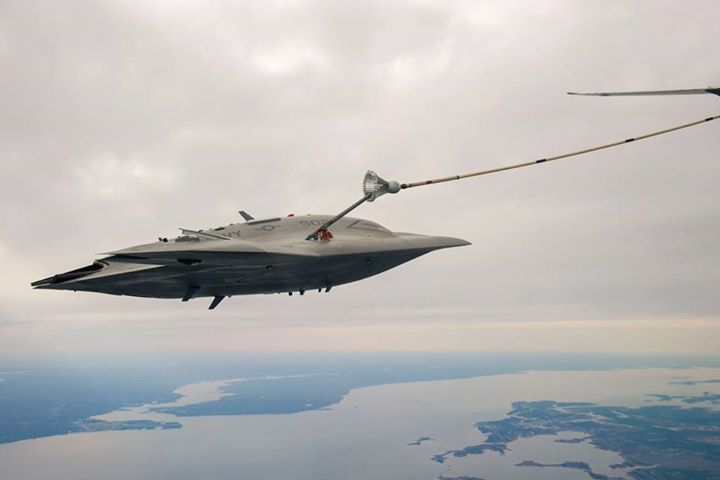
The experimental X-47B drone plugs into an aerial refueling tanker for the first time.
The Sting With Stingray
The MQ-25 drone shows that, even if you use the new approach to acquisition, you don’t always get everything you want. As the Navy developed requirements for the unmanned, carrier-based refueling tanker, said Vice Adm. Johnson, it consulted intensively with the four competitors: Boeing, General Atomics, Lockheed Martin, and Northrop Grumman, which built the first carrier-launched drone, the X-47.
“The CNO (Chief of Naval Operations John Richardson) personally met with all four… twice,” Johnson told reporters. “When they got the RFP, it was not a mystery.”
When the Navy issued the final RFP, however, Northrop dropped out.
“Personally, Dave Johnson, yes, I was surprised that Northrop decided to back out,” Johnson admitted. “(But) we knew that they were worried about the RFP because we had really tooled it towards the tanker,” designed for long endurance but not high performance. Northrop’s X-47 and its subsequent work had been geared towards the earlier concept called UCLASS, Unmanned Carrier-Launched Surveillance & Strike, which was not a tanker but an attack aircraft. “It would have taken some redesign to keep it cost competitive, performance competitive,” Johnson said.
“It’s unfortunate. We thought they would stay in the competition,” he said, “but… we have three very capable folks still in.” Boeing and Lockheed are of course two of the biggest aerospace companies around, while General Atomics invented the iconic Predator drone. And Northrop Grumman, arguably, is better off knowing that MQ-25 was a bad fit for the company now, before it invested even more in winning it.
Johnson is optimistic about the MQ-25. The Navy will choose a winner by Oct. 1st next year, with the first operational unit (Initial Operating Capability) in 2024. That’s fast for an all-new aircraft, especially a carrier-based one, Johnson said. Once the award is made, though, he thinks the Navy and its chosen contractor will be able to “go even faster.”
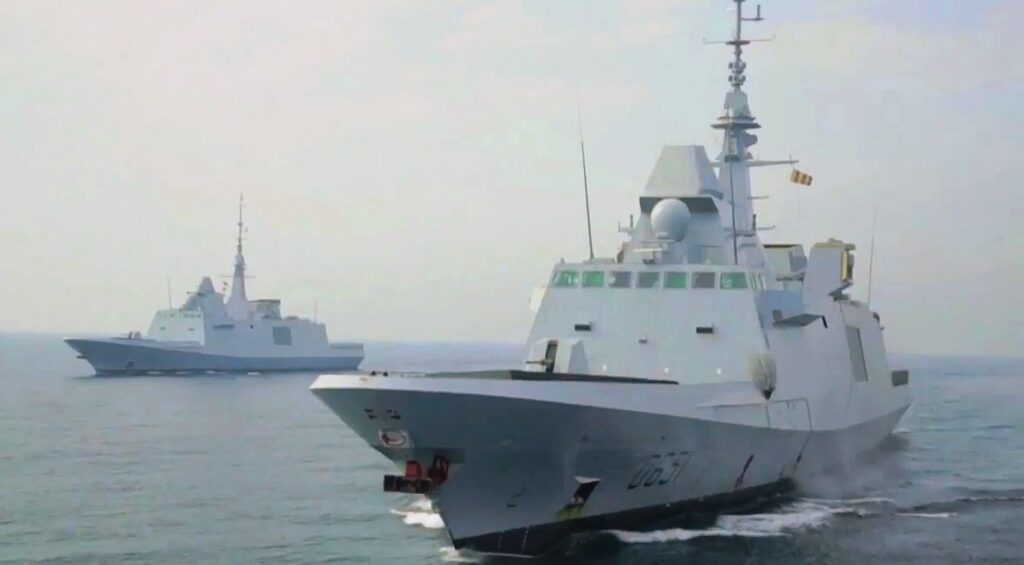
France’s first two FREMM frigates, the Aquitaine and the Normandy, built by Italy’s Fincantieri.
The Limits of Frigates
The upcoming frigate RFP will be the next test for the new approach of intensely consulting with industry. “It takes a lot of time and bandwidth,” Johnson said, “(but) they gave us great input.” As a result, he said, “we know a lot about…the trade space here, and not just the stuff but the cost of the stuff.”
The frigate program builds on the 2014 Small Surface Combatant Task Force, which used pioneered a set-based design approach by looking a host of notional warship designs, informed by surveys and workshops with fleet officers. But ultimately the task force’s choices were constrained by tight time and cost constraints that drove them to recommend just upgrading the existing Littoral Combat Ships, rather than switching to a different design.
The frigate program reopened that question and is looking hard at designs in service with both the Coast Guard and with foreign fleets. (Any vessels for the US Navy will still be built in US yards). An all-new design is probably both cost-prohibitive and unnecessary, given the excellent reputations of NATO frigates such as the Italo-French FREMM and Spanish F-100 series. As a result, there are a relatively small number of well-defined possibilities for what the frigate would be, as opposed to the wide-open thousands of options envisioned in set-based design.
The upcoming RFP — “it should be coming out tomorrow,” Johnson told reporters yesterday — will award contracts for conceptual, fairly high-level designs to up to five companies. The real crunch will come in 2020, when the Navy picks one winner to build the actual ship.
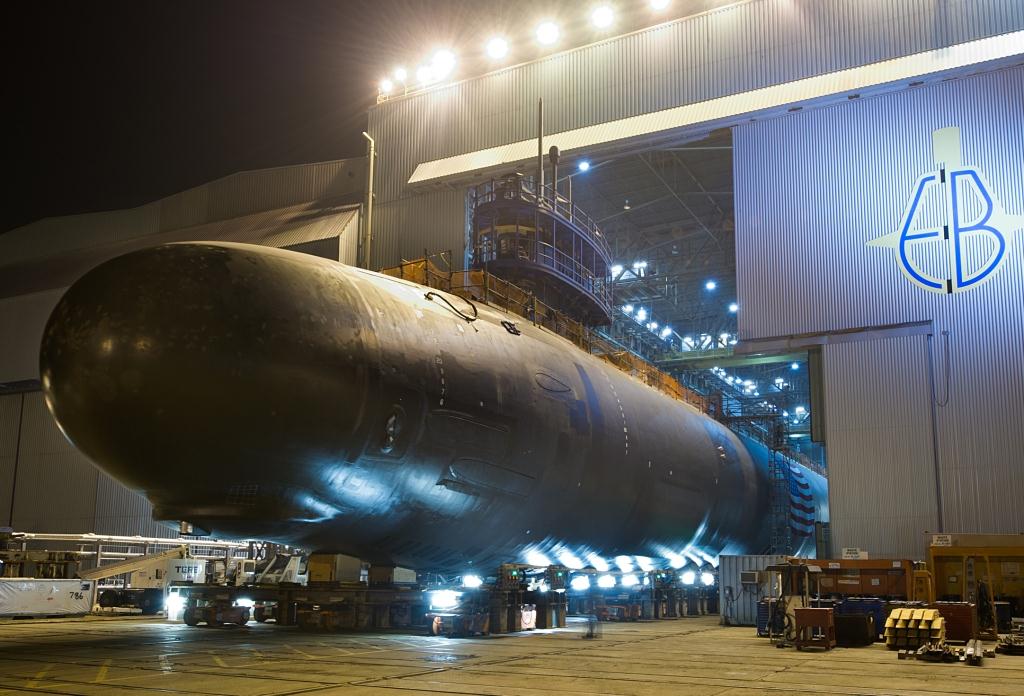
The Virginia-class attack submarine USS North Dakota.
Wide-Open: Future Destroyers & Submarines
The key dates for the future destroyer or cruiser — whichever FSC becomes — and attack submarine are not yet set. But the Navy’s started thinking hard.
On the Future Surface Combat, the Navy is doing “notional studies on what we think the art of the possible is,” Johnson said. The whole range of options is open, from further upgrades of the existing DDG-51 or DDG-1000 classes to a “clean sheet” design that’s new from the keel up.
“You look at the slate of systems that you have and what you’re going to develop,” Johnson said. “Is this ship going to have lasers instead of a gun or a missile VLS cell? I don’t know. These are all things that we are still working through.”
The goal is to build a highly adaptable platform, with what’s called open architecture, into which the Navy can plug in new radars, weapons, and other systems as they’re developed. “You’ve got to build some enabling infrastructure,” Johnson said. “If you’re going to do things like high-energy weapons you need power, right, and you need some real estate to do that.”
The Navy’s taking a similar wide-open approach to the future attack sub, SSN(X), said Rear Adm. Michael Jabaley, the service’ Program Executive Officer for Submarines. “We are aggressively pursuing the design space,” he told the conference. “Set-based design is one of the methods that we’re using.”
The Navy’s last 30-year shipbuilding plan says the first SSN(X) will be procured in 2034, but that plan is already obsolete because the Navy now wants a larger fleet — 355 ships of all classes instead of 308 — with a higher percentage of attacks subs — 66 instead of 48. The real date for the first SSN(X) may be earlier or later than 2034, Jabaley and other officers said.
It depends on when the current, highly successful Virginia class starts running out of room for further upgrades. Currently, the Virginia program has what Jabaley calls a “conveyer belt” that regularly infuses new technology into the class on two-year development cycles. Major changes would have to wait for the end of the current five-year procurement contract, but Jabaley says CNO Richardson is willing to insert high-payoff innovations faster. “We’re willing to take risk,” Jabaley said. “We’re willing to look at breakthrough technologies that come.”
Subscribe to our newsletter
Promotions, new products and sales. Directly to your inbox.
